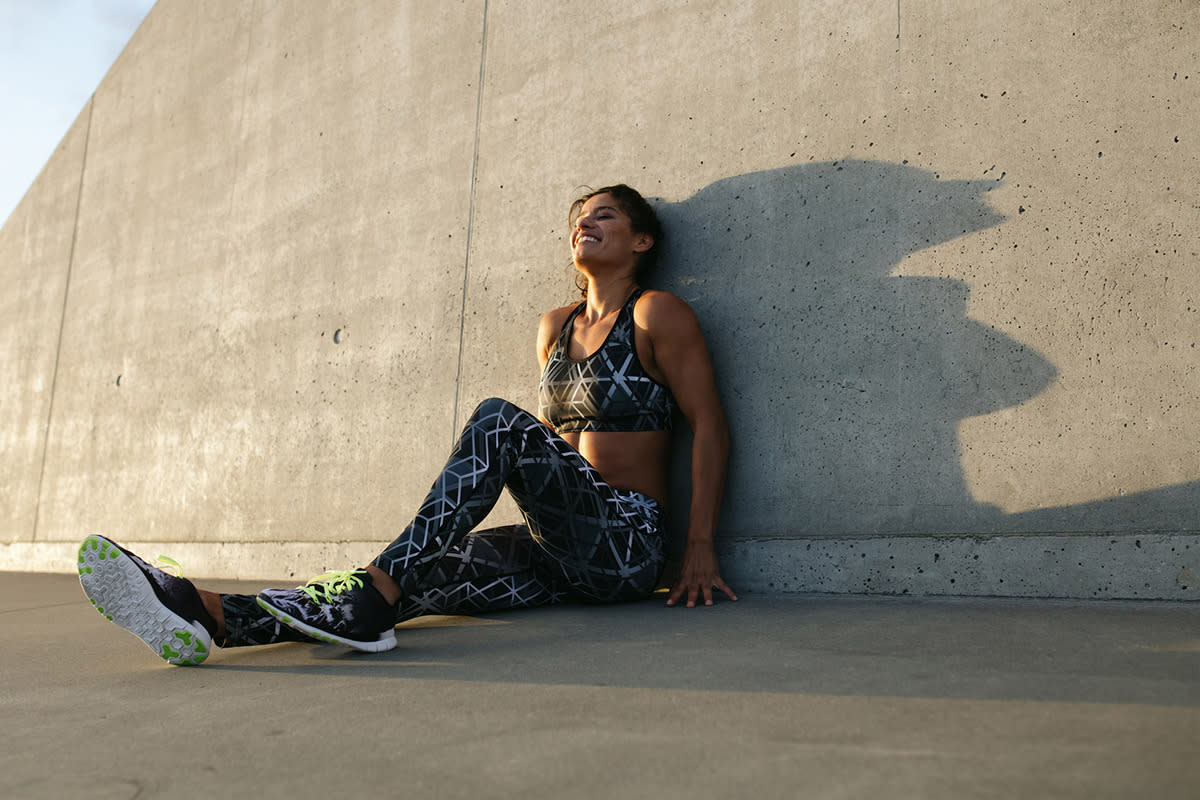Is It Bad If I'm Not Sore After a Workout?

Does a lack of soreness after a workout mean you slacked off? (Photo: Jacob Lund/Stocksy)
I used to wake up every day, almost without fail, for spin class at 5:45 a.m. But then marriage and a baby happened, and my early-morning ambition evaporated. Recently, however, I’ve rediscovered my appetite for sweat — and last week, I finally decided to stroll into spin class after my more than two-year absence and act like I’d never gone M.I.A.
It’s not like I expected to dismount my stationary bike totally unscathed. Quite the opposite, in fact: I was looking forward to the post-workout ache of sore muscles, that stiff-legged walk down the stairs after my lower half had gone wobbly as Jello.
After an hour on the saddle, I was certain I’d be hurting the next morning — I’d diligently “added hill” whenever my instructor shouted her orders, cranked it during sprints, and sweated more than I had in months. But 24 hours later, the only thing that was sore was my back, thanks to 60 minutes spent hunched over handlebars. Forty-eight hours later? Same story.
Where did I go wrong? Had my weight-lifting workouts simply prepared me well for speed-cycling to Miley Cyrus? Or was I somehow, unknowingly, slacking off during class?
First, a quick primer on delayed-onset muscle soreness: The pain that peaks 24 to 48 hours after a workout most often happens when you take a break from training and then start up again, or when you try a new activity for the first time, according to a review article in the journal Sports Medicine.
And contrary to once-popular thought, your after-workout tenderness isn’t a result of lactic acid build-up, says Daniel Carl, PhD, a clinical professor of health sciences at the University of Cincinnati. “It’s the inflammatory response that we tend to feel,” he says. “At the cellular level, you’re getting an increase in edema” — fluid build-up in response to injury — “and therefore you get pain.”
Related: Why Am I More Sore Two Days After a Workout?
But not all exercises, no matter how challenging, are equally ache-inducing. “Delayed-onset muscle soreness is typically related to eccentric muscle actions — muscle lengthening against resistance, such as lowering weights or running downhill,” says Wayne Westcott, PhD, an instructor of exercise science at Quincy College in Massachusetts. “You don’t just drop a weight — you control it down,” adds Disa Hatfield, PhD, CSCS, an associate professor of kinesiology at the University of Rhode Island. That slow, lowering motion creates tiny tears in your muscles, signaling your body to start repairing the tissue — and leaving you feeling sore the next day. The result? “A stronger, better muscle,” says Hatfield.
For more on delayed-onset muscle soreness, watch the video:
This propensity for pain is why, according to the Sports Medicine article, new eccentric exercises should be introduced slowly, over a period of one to two weeks.
By contrast, after spin class, “I wouldn’t expect that you would get sore,” says Hatfield. “As a matter of fact, if you were sore, I’d be worried that you weren’t using enough resistance on your jumps — that you were trying to keep your legs from flailing around on the cycle.”
That’s because cycling is strictly a concentric motion — muscle shortening against resistance — which doesn’t cause the same amount of muscular trauma as eccentric activity, says Westcott. On the bike, “when one leg is pushing, in rotation, the other leg is just along for the ride,” Hatfield explains. “So it’s really not causing any eccentric force.” (One exception: If you’re clipped in and really pulling down during the recovery phase of pedaling, you’ll add a little eccentric activity to your workout, potentially causing you to feel the burn later, says Carl.) That means your first time at spin class is less likely to create next-day pain than doing several sets of, say, muscle-lengthening calf raises.
Related: I Overdid It at the Gym. Now What?
But it’s not just the type of motion that determines how sore you’ll feel. Intensity and volume also play a role, which may explain why, even after a new strength-training workout, you could be totally pain-free the next day. Often, says Hatfield, newbies lift weights that are too light to produce the muscle damage responsible that leads to soreness.
Slacking off isn’t the only explanation for a lack of post-workout pain, though. You may just be super-fit. “When I was powerlifting, I very rarely got sore, because I was used to lifting heavy amounts of weight,” Hatfield says. “Somebody who is more fit, who always resistance trains, doesn’t always get sore — their muscles are kind of used to it.” In my case, my thrice-weekly weight-lifting — which, of course, includes some concentric exercises — may have prepared me well for my time on the bike, even though I haven’t been spinning regularly, says Carl.
A word of caution: Although delayed-onset muscle soreness is a sign of muscle-building, it shouldn’t be the way you gauge whether or not you’ve had a solid sweat session. Instead, rely on your heart rate during aerobic exercise, aiming for 85 percent of your heart rate max (.85 x (220 - your age)), a sign you’re working at a vigorous intensity. And when you’re strength training, simply test your one-rep max — how much weight you can lift one time — for your favorite exercises. If that amount is regularly increasing, you know your program is working.
Read This Next: At-Home Massage Techniques You Can Use to Relax and Refresh Tired Muscles
Let’s keep in touch! Follow Yahoo Health on Facebook, Twitter, Instagram, and Pinterest.
Have a personal health story to share? We want to hear it. Tell us at YHTrueStories@yahoo.com.

